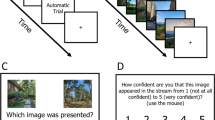Abstract
The cognitive load and learning effects of dual-code and interactivity—two multimedia methods intended to promote meaningful learning—were examined. In Experiment 1, college students learned about the causal chain of events leading to the process of lightning formation with a set of words and corresponding pictures (Group WP), pictures (Group P), or words (Group W). Some students were presented with the organized causal chain of events to study, whereas others were given a self-organization task. Consistent with a cognitive theory of multimedia learning, Condition WP was the highest in instructional efficiency for retention and transfer. However, contrary to our predictions, having students organize the multimedia materials was detrimental to transfer. Two follow-up experiments tested the hypotheses that the negative effects of interactivity were due to students' lack of time control (Experiment 2) and the form of feedback (Experiment 3). The findings showed that interactivity was effective when students were asked to evaluate their answers before receiving corrective feedback from the system.
Similar content being viewed by others
References
Azevedo, R., & Bernard, R.M. (1995). A meta-analysis of the effects of feedback in computer-based instruction.Journal of Educational Computing Research, 13(2), 111–127.
Baddeley, A. (1998).Human memory. Boston, MA: Allyn & Bacon.
Bangert-Drowns, R.L., Kulik, C.C., Kulik, J.A., & Morgan, M.T. (1991). The instructional effect of feedback in test-like events.Review of Educational Research, 61(2), 213–238.
Bruning, R., Horn, C.A., & PytlikZillig, I.M. (2003).Web-based learning: What do we know? Where do we go? Greenwich, CT: Information Age Publishing.
Bruning, R.H., Schraw, G.J., & Ronning, R. (1999).Cognitive psychology and instruction. Upper Saddle River, NJ: Prentice Hall.
Cairncross, S., & Mannion, M. (2001). Interactive multimedia and learning: Realizing the benefits.Innovation in Education and Teaching International, 38(2), 156–164.
Chandler, P., & Sweller, J. (1991) Cognitive load theory and the format of instruction.Cognition and Instruction, 8, 293–332.
Chi, M.T.H., Bassok, M., Lewis, M., Reimann, P., & Glaser, R. (1989) Self-explanations: How students study and use examples in learning to solve problems.Cognitive Science, 13, 145–182.
Clark, J.M., & Paivio, A. (1991). Dual coding theory and education.Educational Psychology Review, 3, 149–210.
Clarke, T., Ayres, P., & Sweller, J. (2005). The impact of sequencing and prior knowledge on learning mathematics through spreadsheet applications. This special issue].Educational Technology Research and Development, 53(3), 15–24.
Kalyuga, S., Chandler, P., & Sweller, J. (1999) Managing split-attention and redundancy in multimedia instruction.Applied Cognitive Psychology, 13, 351–371.
Kalyuga, S., & Sweller, J. (2005). Rapid dynamic assessment of expertise to improve the efficiency of adaptive e-learning. [This special issue].Educational Technology Research and Development, 53(3), 83–93.
Kozma, R.B. (1991). Learning with media.Review of Educational Research, 61, 179–211.
Macromedia. (2002).Flash MX TM [Computer program]. San Francisco, CA: Author.
Martin, V.L., & Pressley, M. (1991). Elaborative-interrogation effects depend on the nature of the question.Journal of Educational Psychology, 83, 113–119.
Mayer, R.E., & Chandler, P. (2001). When learning is just a click away: Does simple user interaction foster deeper understanding of multimedia messages?Journal of Educational Psychology, 93, 390–397.
Mayer, R.E., & Moreno, R. (2003). Nine ways to reduce cognitive load in multimedia learning.Educational Psychologist, 38, 43–52.
Moreno, R., & Durán, R. (2004). Do multiple representations need explanations? The role of verbal guidance and individual differences in multimedia mathematics learning.Journal of Educational Psychology, 96, 492–503.
Moreno, R., & Mayer, R.E. (2000a). A coherence effect in multimedia learning: The case for minimizing irrelevant sounds in the design of multimedia instructional messages.Journal of Educational Psychology, 92, 117–125.
Moreno, R., & Mayer, R.E. (2000b). Engaging students in active learning: The case for personalized multimedia messages.Journal of Educational Psychology, 92, 724–733.
Morrison, G.R., Ross, S.M., Gopalakrishnan, M., & Casey, J. (1995). The effects of feedback and incentives on achievement in computer-based instruction.Contemporary Educational Psychology, 20, 32–50.
Paas, F., Tuovinen, J. E., Tabbers, H., & Van Gerven, P. W. M. (2003). Cognitive load measurement as a means to advance cognitive theory.Educational Psychologist, 38, 63–71.
Paas, F., Tuovinen, J. E., van Merriënboer, J. J. G., & Darabi, A. (2005). A motivational perspective on the relation between mental effort and performance: Optimizing learners' involvement in instructional conditions. [This special issue].Educational Technology Research and Development, 53(3), 25–33.
Paas, F., & van Merriënboer, J. J. G. (1993). The efficiency of instructional conditions: An approach to combine mental-effort and performance meansures.Human Factors, 35, 737–743.
Rabinowitz, J. C., & Craik, F. I. M. (1986). Specific enhancement effects associated with word generation.Journal of Memonry and Language, 25, 226–237.
Schnotz, W., & Rasch, T. (2005). Enabling, facilitating, and inhibiting effects of animations in multimedia learning: Why reduction of cognitive load can have negative results on learning. [This special issue].Educational Technology Research and Development, 53(3), 47–58.
Stanton, N.A., Porter, L.J., & Stroud, R (2001). Bored with point and click? Theoretical perspectives on designing learning environments.Innovation in Education and Teaching International, 38(2), 175–182.
Sweller, J., van Merriënboer, J.J.G., & Paas, F. (1998). Cognitive architecture and instructional design.Educational Psychology Review, 10, 251–296.
van Merriënboer, J.J.G., & Ayres, P. (2005). Research on cognitive load theory and its design implications for e-learning. [This special issue].Educational Technology Research and Development, 53(3), 5–13.
Author information
Authors and Affiliations
Corresponding authors
Additional information
This research was supported by the CAREER 0238385 grant from the National Science Foundation. Any opinions, findings, and conclusions or recommendations expressed in this material are those of the authors and do not necessarily reflect the views of the National Science Foundation. Casey Frechette and Paul Gibson created the multimedia materials used in these studies.
Rights and permissions
About this article
Cite this article
Moreno, R., Valdez, A. Cognitive load and learning effects of having students organize pictures and words in multimedia environments: The role of student interactivity and feedback. ETR&D 53, 35–45 (2005). https://doi.org/10.1007/BF02504796
Issue Date:
DOI: https://doi.org/10.1007/BF02504796




